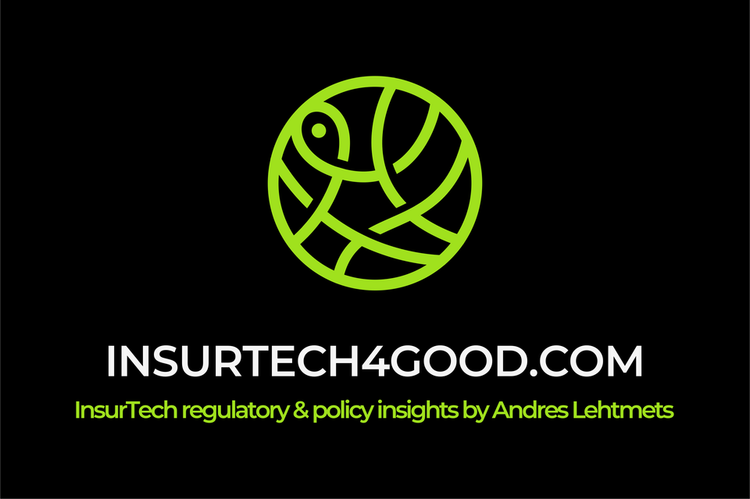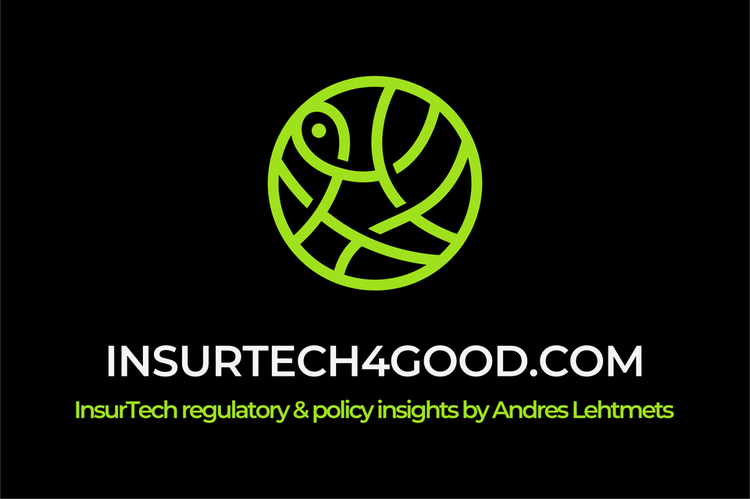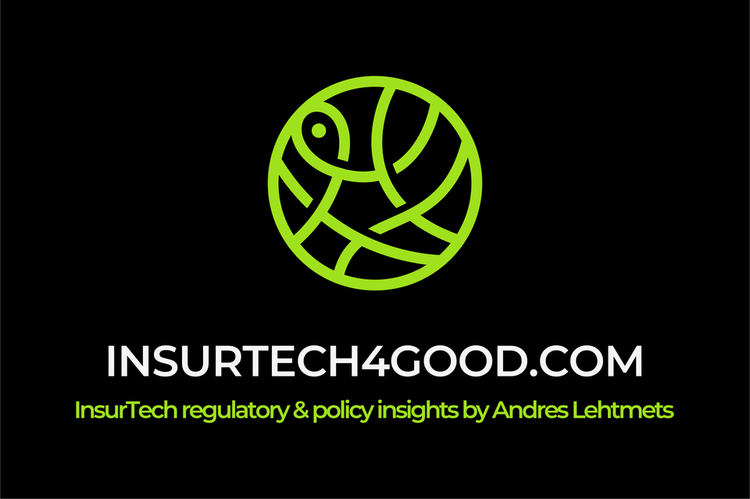InsurTech4Good.com Weekly Newsletter – #30, 2025

Personal update. I’m excited to share that I have joined Striga, a Lightspark company, as a Supervisory Board Member. This has been in the works for some time. Such decisions are always carefully considered, especially if you have served as a supervisor before. What’s the background story? Read more here.
What else? I also attended the Tallinn Digital Summit, where discussions focused on building beneficial, scalable, and interoperable frameworks for AI across societies and economies. While the main emphasis was on security and defense, many insights were highly relevant for insurance and finance as well.
Broader themes such as EU competitiveness, making the Savings and Investment Union work for people and businesses, and how the pensions and insurance sectors can support investment in European tech and innovation, together with the Digital Fairness Act, all connect to a common goal: enabling sustainable progress.
The OECD session on AI governance also sparked new ideas for practical SupTech solutions. SupTech has huge potential to do more with less and, if implemented well, can boost competitiveness by reducing the reporting and compliance burden for firms.
That is it from my personal perspective. Before moving to the news, what can we expect from this week? The main highlight will be the European Commission Work Program, expected later this week. Key questions are what will be included and what will be left out. There are again many rumors around FIDA, but we will know more soon.
If you would like to be among the first to get these updates, subscribe to my newsletter here.
Andres
FSB outlines next steps for authorities on AI monitoring
Artificial Intelligence is moving fast in finance, but regulators are still figuring out how to monitor its adoption and risks.
The Financial Stability Board’s new report shows that while supervisors understand use cases better, monitoring is at an early stage.
Data gaps and a lack of standardised taxonomies remain key obstacles.
The report also warns about growing reliance on a small number of third-party providers in the generative AI supply chain.
Dependencies on specialised hardware, cloud infrastructure and pre-trained models create vulnerabilities if concentration leaves firms with few alternatives.
Read more here.
Advanced Satellite Mission and Insurance
Planet has introduced Owl, its most advanced fleet of satellites to date, capable of delivering one-meter imagery.
Insights can be available within as little as one hour, making Earth observation faster, sharper, and more actionable than ever before.
The first technology demonstration is planned for 2026, with further launches to follow.
For insurers, high-resolution, low-latency data can transform post-disaster damage assessment, enabling faster and more accurate claims handling, reducing fraud, and improving customer trust.
Beyond that, these advances could support predictive risk modeling for natural catastrophes, improved monitoring of insured assets such as infrastructure and forestry, and more efficient underwriting of climate-related risks.
For some, insurance may seem boring. In reality, it is closely connected with many other fields of life, from climate change to infrastructure resilience and disaster response. Insurance is not just about policies and claims. It is about making sense of change, and technologies like these help insurers do that.
Read more here.
FiDA and gatekeepers
EU Member States are divided. One of the hottest discussion points in the EU’s Financial Data Access (FIDA) proposal is how to deal with gatekeepers.
Some thoughts can be found in this recent paper.
Global top 10 emerging risks
Global top 10 emerging risks according to experts in 2025.
1. Climate change
2. Geopolitical instability
3. Cybersecurity
4. AI and Big Data
5. Social tension and movements
6. Natural resources and biodiversity
7. Macroeconomics
8. Energy risks
9. Financial stability risk
10. Demographics
I share the AXA Future Risks Report with you every year.
Understanding risk is important because if you understand risks, you can often at least partially avoid or mitigate them.
Read more here.
Open banking and open finance in the UK
Open banking is evolving but what will it take to make open finance work?
A new FCA-commissioned Research Note by KPMG and Europe Economics explores the current state of open banking in the UK, key barriers to open finance, and what a strategic path forward could look like.
It highlights adoption trends, data and tech challenges, and the trade-offs regulators must navigate to build a safe, effective open finance ecosystem.
Read more here.
Artificial Intelligence Adoption and Sectoral Transformation
In this report, the authors present the AI Capabilities Framework, a tool for understanding existing AI applications and anticipating future developments.
It also emphasizes the need for a systematic evaluation of the potential policy challenges, opportunities, and uncertainties surrounding AI adoption.
The report focuses on AI’s transformative potential across four specific sectors: financial services, climate and energy, health care, and transportation.
Key findings from the financial services part:
1. Most deployments of AI in the financial services sector currently operate at lower capability levels, although some systems are beginning to exhibit characteristics of higher capabilities, particularly in trading and investment, risk management, and customer service.
2. The sector’s adoption of AI promises significant benefits but may also introduce new forms of systemic risk that differ markedly from those associated with traditional algorithmic trading, raising concerns about market stability and regulatory oversight.
Read more here.
New Tech for NatCat
Protection gaps in insurance are widening, for example in pensions, nat cat, health and cyber. Closing them requires structural change and bold action.
That means stronger support for technology and innovation, and much more focus on building data infrastructure.
The New Tech for NatCat publication brings together expert insights from academia, public organizations, and the private sector to explore how remote sensing and artificial intelligence are transforming the way we understand, predict, and respond to natural disasters.
Read more here.
Hope you enjoyed the read!
Andres
📬 Subscribe to my newsletter here
📌See how I can help you here
🔗 Follow me on LinkedIn
📧 andres@insurtech4good.com





Member discussion